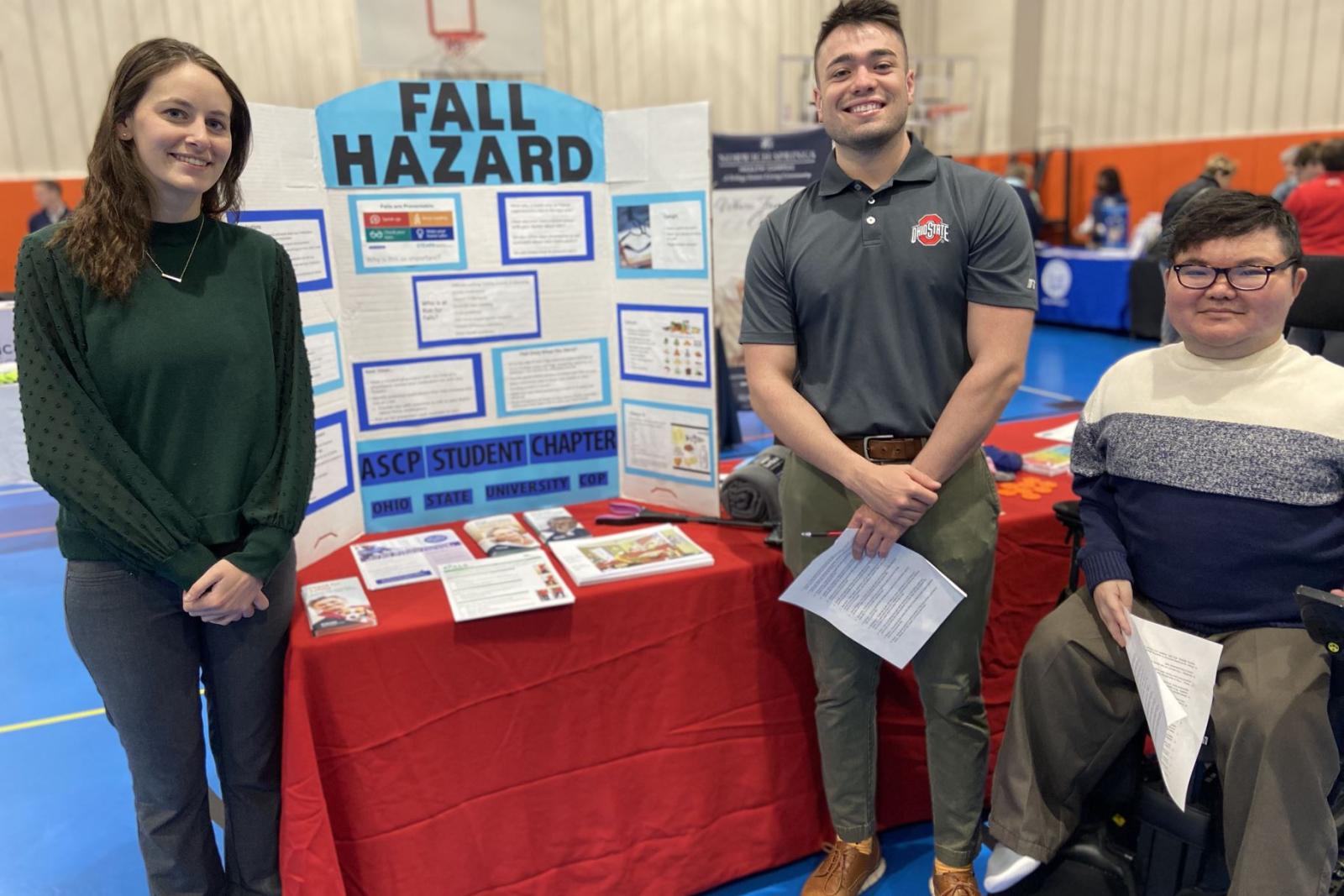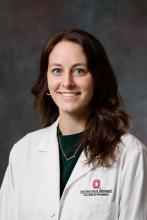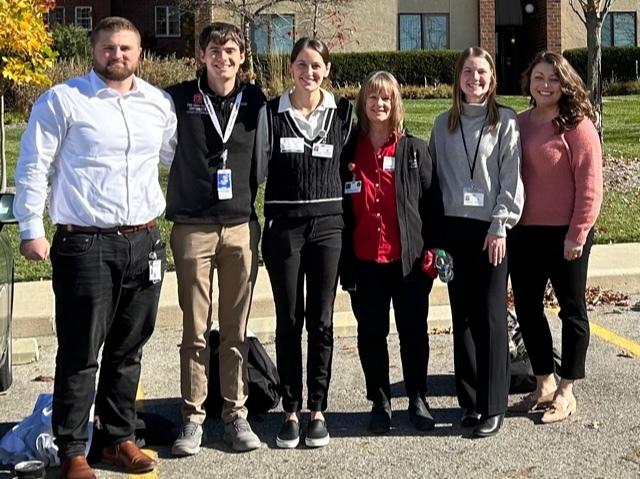PharmD candidate finds career-changing experience in ASCP Fall Prevention Program

When Camryn Barton stepped into the role of co-chair for the American Society of Consulting Pharmacists (ASCP) student chapter at The Ohio State University, she never expected to stumble upon her passion in health care: working with older adults.
The fourth-year PharmD candidate at The Ohio State University College of Pharmacy has spent the past two years with the ASCP Fall Prevention Program, an effort kickstarted in 2021 by Ruth Emptage, PharmD, associate professor of practice in the Division of Pharmacy Education and Innovation; Ashley Lohmann, PharmD, RPh, former Pharmacy Practice Advancement and Advocacy Fellow; and Leah Coad, PharmD, alumna and ASCP student chapter co-chair.
Falls are the leading cause of injury among Ohioans age 65+ and account for around 60% of traumatic brain injuries for that population. Drs. Emptage, Lohmann and Coad wanted to construct a program that could address the group’s increased fall risk through direct intervention and outreach.
The team secured two consecutive years of funding through grants from the Union County Health Department. As the project began to take off, Dr. Coad brought her ASCP co-chair, Barton, on board.
“I was so lucky to have had Leah invite me onto this project,” Barton said. “It’s been a huge part of my time as a student.”
The group developed an educational program for residents in independent living communities and nursing homes. Each presentation reviewed common fall risks and prevention methods for audiences.

Understandably, older individuals don’t want to lose their independence – no one does. So, it can be hard to speak up about a topic that could potentially affect your autonomy.
In addition to environmental fall factors, certain medications present a real but lesser-known risk to people susceptible to falls, so participants were offered a voluntary medication review following the presentation.
While meeting with patients to review the presence of Fall-Risk Increasing Drugs (FRIDs), Barton connected with the person-first style of the program.
“You don’t often have the chance to think about the different ways that growing older can affect a person,” Barton said. “In this program setting, I got to listen to our patients and learn from them. It was so formative to experience the trust of patients in those small one-on-one moments.”
Before long, Barton became a role model of patient interaction for the rest of the students joining the program.

“Camryn’s efforts have been a big part of the program becoming known to students around the college as a great way of earning CHS hours,” Dr. Emptage noted. “She was an excellent role model for her PharmD classmates at the events, demonstrating active listening skills with the older adults. She even went the extra mile to train her fellow students for the events by ensuring they knew about fall prevention risks, including specific FRIDs.”
In her two years with the Fall Prevention Program, she guided over 60 student pharmacists through the training process, familiarizing them with fall prevention, teaching them to identify FRIDs and rehearsing what an effective medication review looked like.
“Leading my peers through training and outreach was incredible,” Barton reflected. “I discovered this new level of satisfaction that came from teaching others. I created a lot of great relationships with those students and saw them building relationships with the participants as well.”
If her first year with the program sparked Barton’s interest in working with older populations, the second year cemented it. She continued to deliver educational programming and medication reviews to older adults and began research efforts to gauge the program’s success.
“I was glad we had this research opportunity because it allowed us to show just how beneficial this project can be for individuals,” Barton said.
Barton recruited her close friend and peer Danielle Vulcano to assist with the research design and data collection. Together, they created a survey for participants after presentations and medication reviews.
Through the surveys, participants showed their knowledge of fall risks and prevention. Additionally, they reflected on their anxieties surrounding the topic of falling and their level of comfort in discussing the topic with care providers.
“Understandably, older individuals don’t want to lose their independence – no one does,” Barton said. “So, it can be hard to speak up about a topic that could potentially affect your autonomy. I’m hopeful that these reflections and full discussions we initiated were a way to open that line of communication between older adults and their health care providers.”
Since wrapping up her second year with the program, she has has presented the group’s findings on local and national levels, and the team’s research was recently accepted for publication in ASCP’s journal, The Senior Care Pharmacist.
Barton was recognized this month with the United States Public Health Service Excellence in Public Health Pharmacy Award for her work with the program. This award is presented by the Pharmacist Professional Advisor Committee of the United States Public Health Service (USPHS). The prestigious award recognizes pharmacy students who have made significant contributions to public health by promoting wellness and healthy communities. To be considered for the award, students are evaluated on their contributions that advance the goals of Healthy People 2030.
During her ASCP Fall Prevention Program tenure, Barton and her team of student pharmacists have initiated over 300 interactions with older adults through educational presentations and games, medication reviews, and health fair interactions.
From growing the project’s team to recording its success in hopes of future instances and expansions, Barton has worked tirelessly to build this community program. By establishing its place in the college, the Fall Prevention team is linking students to their community and creating better health outcomes for older adults in Central Ohio.